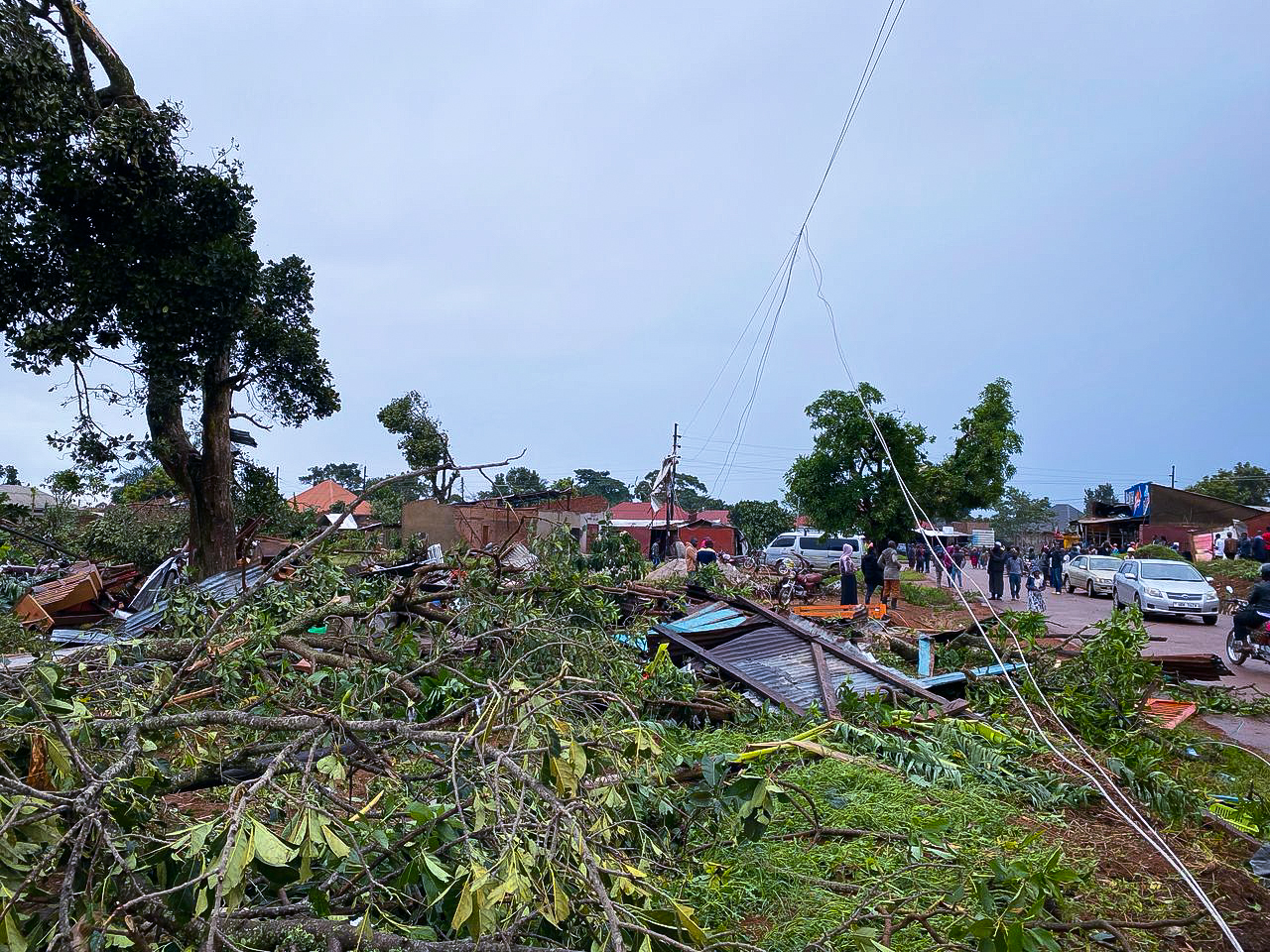By Samuel Nkuba
KALANGALA, Uganda: The devastating hailstorm that struck Kalangala over the weekend pf March 15, 2025 has claimed its fourth victim, underscoring the increasing threat of extreme weather events in the region. The latest casualty, Allen Kobusingye Mukyasi, succumbed to injuries at Masaka Regional Referral Hospital, where several other critically wounded individuals, including her husband, Corporal Mukyasi, are receiving treatment.
The storm left a trail of destruction, destroying homes, businesses, and critical infrastructure. The dead have now been identified as Ssekiwere Geoffrey, Wasswa Hassan, Detective Mujaasi Michael, and Allen Kobusingye Mukyasi.
A Climate Crisis Unfolding
The storm's impact was severe, with Kalangala Central Police Station suffering significant damage, including the destruction of 32 uniports. Additionally, more than 200 residential houses were unroofed or entirely demolished, leaving many families homeless. Shops and market stalls were swept away, disrupting livelihoods in a region already vulnerable to economic instability.
Eyewitness accounts describe the event as a terrifying cyclone-like wind that tore through the area with alarming speed. Hussein Ddungu, a resident of Kalangala Town Council, recounted seeing a dark, swirling mass that “entangled everything in its path, sending debris into the sky.”
This phenomenon is becoming increasingly common in Kalangala, mirroring destructive storm patterns observed worldwide due to climate change. Similar events have been reported this year, including the March 5th storm at Lujjabwa landing site, which wrecked a passenger boat, and the January storm at Lwaazi-Bubeke that left over 100 fishermen homeless.

Deforestation: The Hidden Catalyst
Experts point to environmental degradation as a key factor worsening the severity of these storms. According to Adrian Joy Matovu, an elder on Buggala Island, Kalangala’s once-thick forests acted as natural barriers, weakening the intensity of storms before they reached human settlements. However, rampant deforestation for agriculture and commercial purposes has left communities defenseless.
Hellen Nakimuli, the Kalangala Woman Legislator, called for urgent action to restore forests. “We need environmental organizations and the government to lead reforestation efforts. These storms are getting worse, and we must act now to protect lives and property.”
The Science Behind the Storms
According to the University of Western Australia, such violent tropical storms—called typhoons in Asia, hurricanes in the Atlantic, and cyclones in the Indian and Pacific Oceans—are fueled by rising ocean temperatures. As climate change warms the planet, sea surface temperatures exceeding 26.5°C provide the energy needed for cyclones to form.
The process begins when warm air rises, creating a low-pressure system that draws in surrounding winds. The Earth’s rotation causes these winds to spin, intensifying the storm. The stronger the temperature contrast between the ocean and the atmosphere, the more powerful the cyclone becomes—explaining the increasing intensity of storms in Uganda’s Lake Victoria region.
Emergency Relief Efforts Underway
In response to the devastation, local businesses and relief organizations have mobilized aid for affected residents. Brovad Sands Lodge has donated 300 kg of maize flour, 100 kg of beans, and 40 iron sheets to help rebuild homes. Police have provided essentials, including mattresses, bedsheets, and tents, for displaced officers.
“Our business relies on the local community, and we feel a responsibility to support them in this time of need,” said Justine Nakasi, assistant manager at Brovad Sands Lodge.
The Uganda Red Cross has completed its assessment and is coordinating efforts to deliver emergency supplies. “We are working to ensure that relief materials reach the victims as soon as possible,” said Sylvester Ssemugenyi, the Kalangala Branch Manager.
A Call to Action
The increasing frequency of these storms is a wake-up call. Without urgent climate action and environmental conservation measures, Kalangala and other vulnerable regions will continue to suffer from the devastating consequences of extreme weather. Reforestation, improved infrastructure resilience, and climate adaptation strategies are critical to safeguarding communities from future disasters.
The people of Kalangala are resilient, but resilience alone will not be enough. Governments, environmental organizations, and individuals must work together to combat climate change before more lives are lost.
